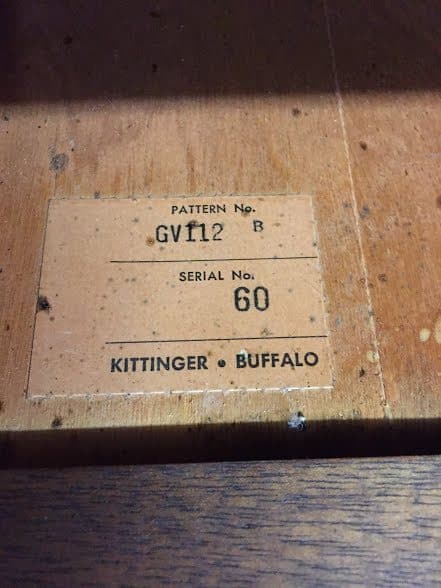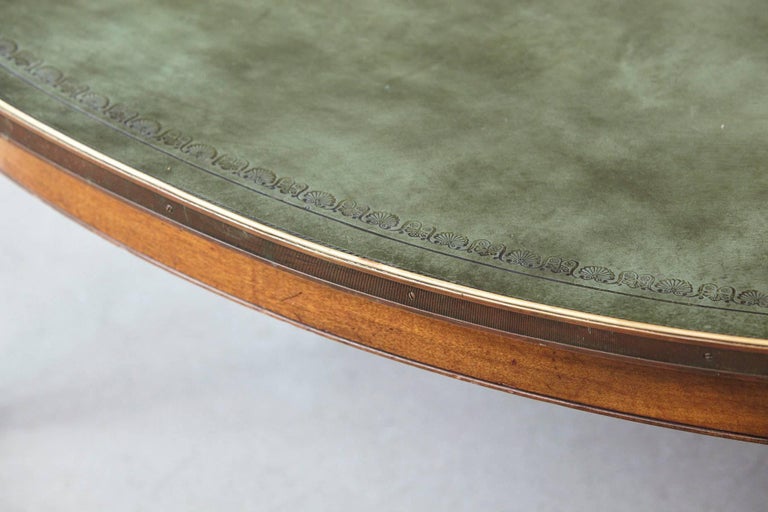Kittinger Furniture Serial Numbers
Want your office to look like the Oval Office? Now you can get the exact same that the president uses, for 50 percent off the usual price.Kittinger furniture has graced the White House for over 40 years, ever since President Nixon took a look around the homes of other heads of state, and realized that the White House was coming up short. Using his own money, he commissioned Kittinger to completely refurbish the West Wing.In November of 1969, the company started work on the Cabinet Room, installing a 22.5-foot long table and 24 chairs — one of which was made a few inches taller, so that the president could loom over his colleagues in a suitably intimidating fashion. All files gta sa. After that, Kittinger replaced the furniture in the rest of the West Wing. Now, their classic burled wood designs decorate every room from the lobby to the Oval Office.If you’ve seen photos of our president leaning on his desk or resting his feet on his coffee table, you’ve seen — and unconsciously admired — Kittinger furniture. The company’s website offers a fascinating. Kittinger also furnished the Congress, the Senate, and the offices of world leaders all over the planet.Now, you can bring this elegance and aura of solid respectability to your own office.
Arnolds is currently offering a beautiful Kittinger partners desk, complete with burled wood drawer fronts and brass handles, for $18,500 — nearly half off the standard pricetag of $35,000.Your clients will know they’re in good hands when they see this desk sitting in your office, and you’ll know that you’ve got the very best office furniture that money can buy. In this case, you’ll also know that you paid a lot less of that money than almost anyone else who owns one of these, presidents and heads of state included.This desk comes with a plaque of authenticity, complete with serial number, so you know what you’re getting. Not that you’ll have any doubt when you see this gorgeous piece of office furniture. It’s more like a piece of art than an ordinarily piece of office equipment.We don’t get these pieces in every day, so this is a rare opportunity to get the very best office furniture for half what the other guys paid. Pop in and ask to see the Kittinger partners desk today.Images:.
Description:Published semiannually by the University of Chicago Press on behalf of the Bard Graduate Center (BGC) in New York City, West 86th reaffirms the BGC's commitment to expanding the conversation regarding the content, meaning, and significance of objects. The journal focuses on scholarship in material culture, design history, and the decorative arts. West 86th is available in print and online and includes scholarly articles, review articles, primary source translations, critical book, catalog, and exhibition reviews, research inquiries, letters to the editor, and supplementary digital material integral to articles. Articles are subject to double-blind peer assessment. The journal welcomes submissions from scholars worldwide. The 'moving wall' represents the time period between the last issueavailable in JSTOR and the most recently published issue of a journal.Moving walls are generally represented in years.

Lane Furniture Serial Numbers


In rare instances, apublisher has elected to have a 'zero' moving wall, so their currentissues are available in JSTOR shortly after publication.Note: In calculating the moving wall, the current year is not counted.For example, if the current year is 2008 and a journal has a 5 yearmoving wall, articles from the year 2002 are available. Terms Related to the Moving Wall Fixed walls: Journals with no new volumes being added to the archive. Absorbed: Journals that are combined with another title. Complete: Journals that are no longer published or that have beencombined with another title. In July 1936 Tomlinson of High Point, a mid-priced North Carolina furniture manufacturer, began a franchising and marketing concept called the Williamsburg Galleries that gained broad national acceptance in stores and among consumers.
Outraged by Tomlinson’s actions and unwilling to abandon the retail market to those it felt were interlopers, Colonial Williamsburg set up a subsidiary corporation, Williamsburg Craftsmen, Inc., that licensed manufacturers to create reproductions of objects owned by the Restoration. Furniture was the most important part of the plan, and Williamsburg licensed the Kittinger Company of Buffalo, New York, as the manufacturer. Selected department stores were encouraged to build sales spaces that were period replicas of Raleigh Tavern rooms, and craft shops were developed in the historic area to promote the work of the various manufacturers. Because a number of stores sold both Tomlinson and Kittinger products, Williamsburg developed the concept of “authenticity” to distinguish the copies being made by Kittinger from Tomlinson’s generic eighteenth-century adaptations. Virtually handmade, said the Restoration, these Kittinger pieces were line-by-line reproductions, inside and out, of originals on display in Williamsburg, Virginia. Regardless of what Colonial Williamsburg said and believed, however, recent examination of individual pieces of Kittinger furniture made for the Restoration reveals that the New York factory relied far more on modern machine production methods than on craft methods of the eighteenth century.